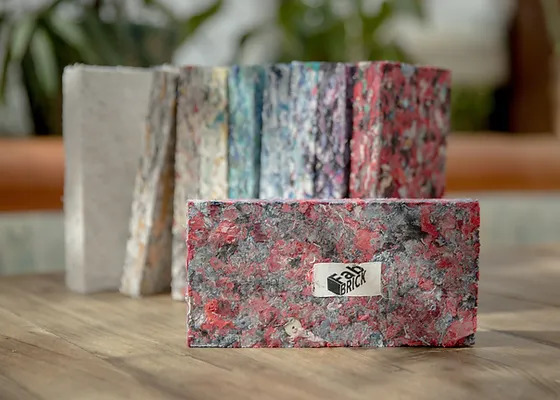The fashion industry, a titan of creativity and self-expression, unfortunately, casts a long shadow of waste. Mountains of discarded clothing pile up in landfills each year, representing a significant environmental burden. But amidst this growing concern, a Parisian design agency named FabBRICK is weaving a new narrative that transforms this waste into a revolutionary force for sustainable construction. FabBRICK isn’t merely creating “eco-friendly” bricks – they’re fundamentally redefining what building materials can be.
“We started FabBRICK because we were frustrated by the sheer amount of textile waste generated by the fashion industry,” explains co-founder Isabelle Vallée. “We knew there had to be a better way, a way to give these discarded clothes a second life.” This frustration became the spark of inspiration, leading Vallée and her team to develop a groundbreaking process for transforming textile waste into a surprisingly versatile construction material.

From Landfill to Living Room: A Second Life for Discarded Threads
Imagine a world where the very clothes you wear today could become the building blocks of your home tomorrow. FabBRICK takes this seemingly fantastical notion and turns it into reality. The process begins with collecting discarded textiles from old t-shirts and jeans to fabric scraps left over from garment production. These textiles are then meticulously shredded, creating a soft, colorful mulch. The magic truly happens when this shredded material is combined with bio-sourced glue, a proprietary recipe that FabBRICK keeps closely guarded. This innovative mixture is then compressed and molded into sturdy bricks, each one containing the textile equivalent of roughly two t-shirts.
“The beauty of FabBRICK lies in its simplicity,” says co-founder Nicolas Faure. “We’re taking something most people consider trash and transforming it into a valuable resource.” These FabBRICKS are not just a testament to human ingenuity; they represent a significant step towards a more sustainable future for the construction industry. By diverting textile waste from landfills and into useful building materials, FabBRICK combats environmental pollution and resource depletion, one brick at a time.
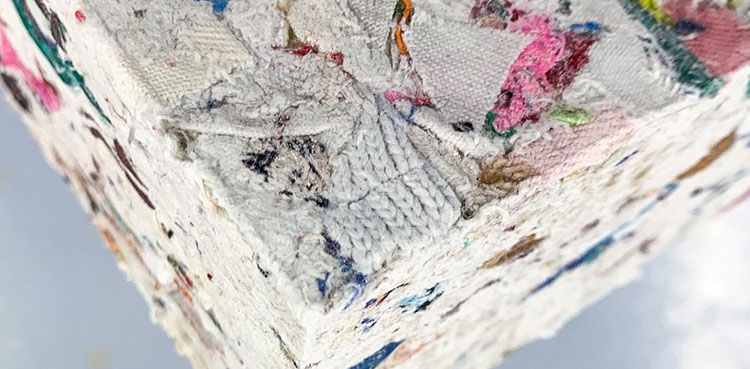
Strength in Softness: FabBRICK’s Surprising Versatility
One might to be tempt to dismiss FabBRICKS as charming but impractical. After all, their origins lie in the soft world of textiles. However, beneath their unassuming exteriors lies a surprising strength. FabBRICKS boast impressive structural integrity, making them suitable for a variety of applications beyond simple decorative elements. Architects and designers are increasingly incorporating FabBRICKS into walls, creating not just visually stunning spaces but also structurally sound ones.
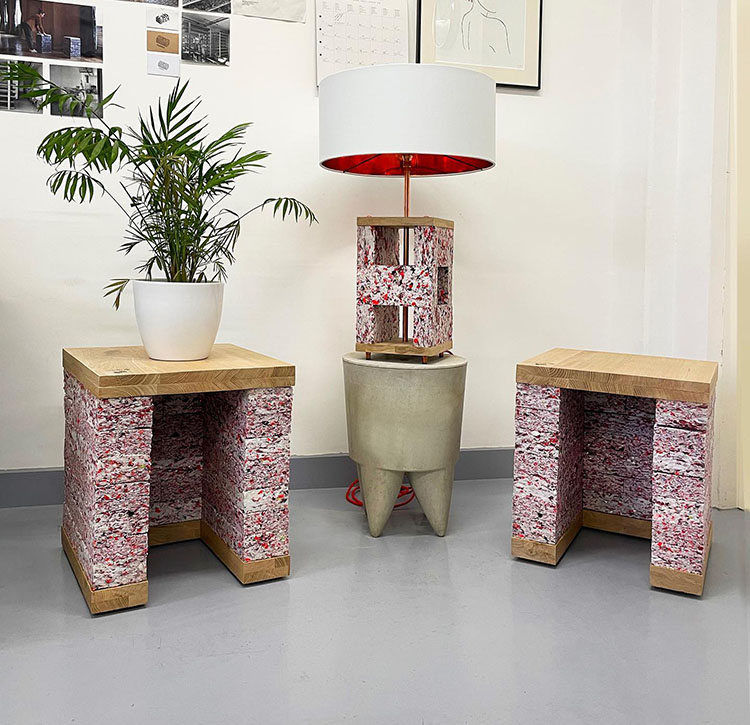
“We were initially surprised by the sheer strength of the FabBRICKS,” says architect Chloe Dupont, who recently used them in a residential project. “They offered all the structural support we needed for the interior walls, while still allowing for a unique aesthetic.” FabBRICK’s benefits extend far beyond mere strength. The compressed textile structure provides excellent thermal and acoustic insulation, keeping your living space comfortable and quiet. This translates to lower energy bills and a more peaceful home environment. Fire resistance is also a key feature, ensuring the safety of your home and meeting essential building codes.
A Palette of Possibilities: Unleashing Design Freedom
While sustainability is a core value for FabBRICK, they haven’t forgotten the importance of aesthetics. Their bricks come in a variety of colors, not just the muted tones one might expect from recycled materials. FabBRICK offers a vibrant palette, ranging from deep, earthy browns and calming greens to pops of sunshine yellow and fire engine red. This allows for creative freedom in design, letting architects and homeowners express their unique personalities through their walls and furniture.
Imagine building an accent wall with a cascade of vibrant red FabBRICKS, creating a bold and energetic statement piece. Or perhaps you envision a sleek, minimalist coffee table crafted with cool charcoal gray bricks, adding a touch of sophisticated elegance to your living room. The possibilities are truly endless, limited only by the designer’s imagination. FabBRICK even offers custom color options, allowing for a truly bespoke approach to sustainable building.
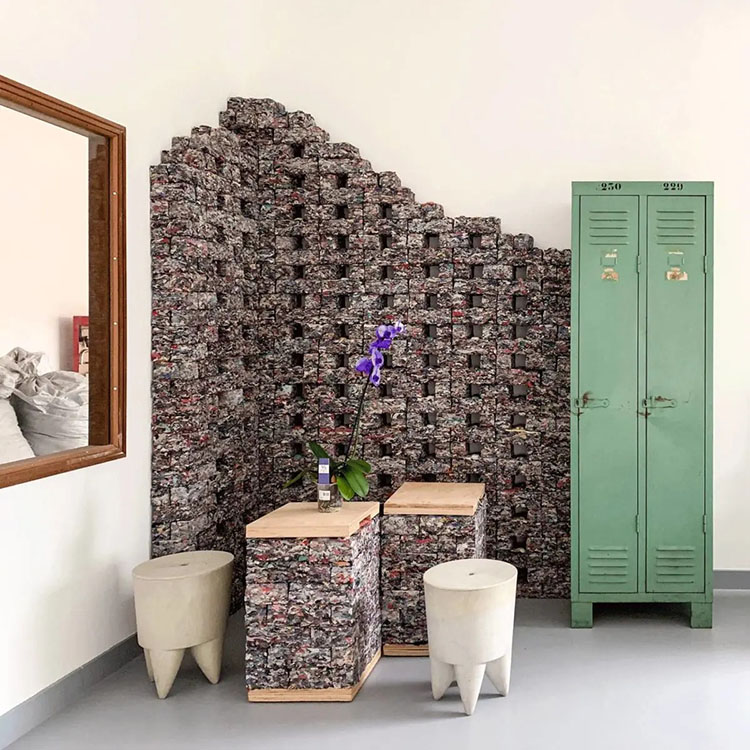
Beyond Sustainability: A Commitment to Change
FabBRICK’s mission extends far beyond creating eco-friendly materials. They actively promote local manufacturing, reducing the environmental impact associated with long-distance transportation. Their production facilities are locate in France, minimizing the carbon footprint associated with moving raw materials and finished products. This commitment to local production also fosters economic development within the region, creating jobs and supporting local businesses.
But FabBRICK’s impact goes even deeper. They play a crucial role in raising awareness about the staggering amount of textile waste generated by the fashion industry. “Most people don’t realize the sheer volume of clothing that ends up in landfills each year,” says Vallée.

One impactful initiative FabBRICK employs involves returning transformed textile waste back to the companies that generated it. Imagine a clothing brand receiving a shipment, not of new garments, but of vibrantly colored FabBRICKS meticulously crafted from their own discarded textiles. This powerful visual serves as a call to action, a tangible reminder of the environmental footprint associated with their production practices. Many companies, upon receiving these “upcycled” bricks, are inspired to re-evaluate their waste management strategies and explore more sustainable production methods.
Building a Community: Collaboration is Key
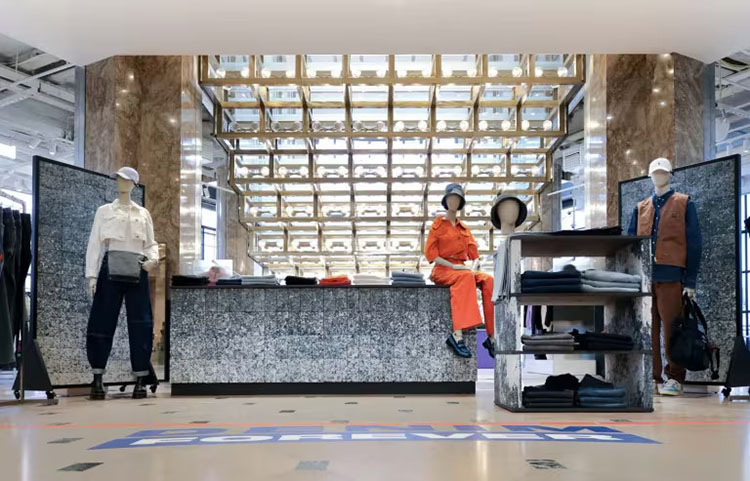
FabBRICK understands that true change requires collaboration. They actively partner with various stakeholders within the fashion and construction industries. This includes working with fashion brands to collect their textile waste and providing them with a responsible way to dispose of unwanted materials. FabBRICK also collaborates with architects and designers, educating them about the potential of this innovative building material. Workshops and seminars are conducted, showcasing the versatility and functionality of FabBRICKS. This collaborative approach fosters a sense of community and shared responsibility for creating a more sustainable future.
A Sustainable Future, One Brick at a Time
FabBRICK is more than just a company; it’s a movement towards a more sustainable future for construction. By offering a unique and innovative building solution, they empower architects and designers to create spaces that are not only beautiful and functional but also kind to the environment. Imagine a world where our buildings are not just places to live and work but testaments to our commitment to environmental responsibility. With FabBRICK, this vision becomes a tangible reality.
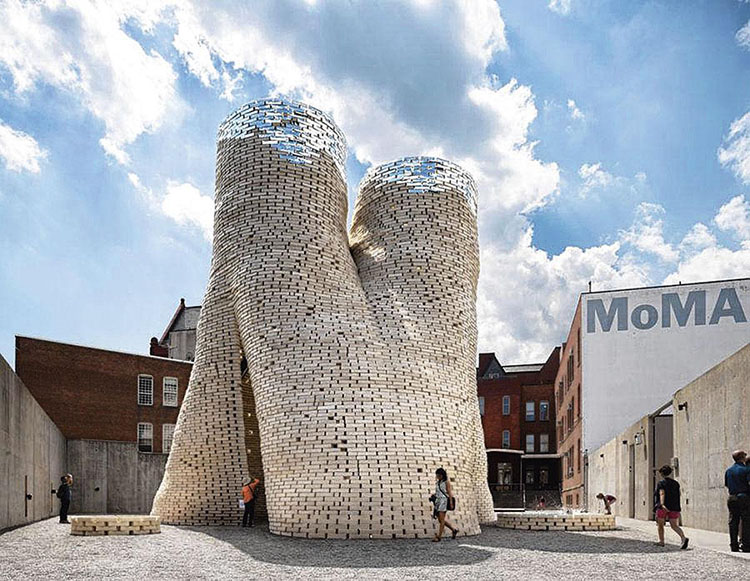
The road ahead is not without challenges. Scaling production to meet growing demand remains a hurdle. as does ensuring the widespread adoption of FabBRICKS within the construction industry. However, FabBRICK’s dedication to innovation and collaboration suggests that these challenges are not insurmountable. As consumer awareness of sustainable practices grows, the demand for eco-friendly building materials like FabBRICKS will likely surge.
So, next time you consider a renovation project, look beyond traditional materials. With FabBRICK, you can build a stronger, healthier, and more sustainable future, one recycled textile brick at a time. By choosing FabBRICKS, you’re not just building a wall – you’re weaving a new narrative for the future of construction, a narrative where fashion and sustainability go hand in hand.

